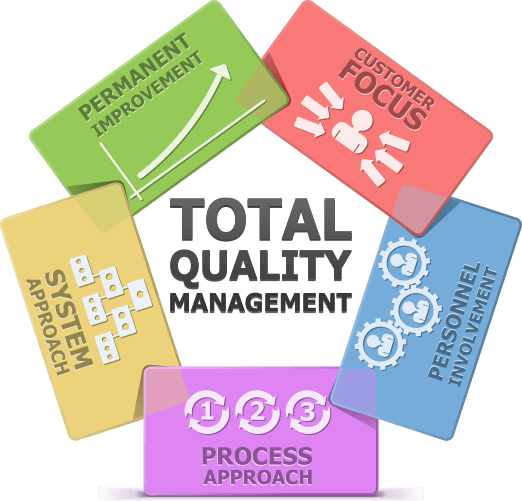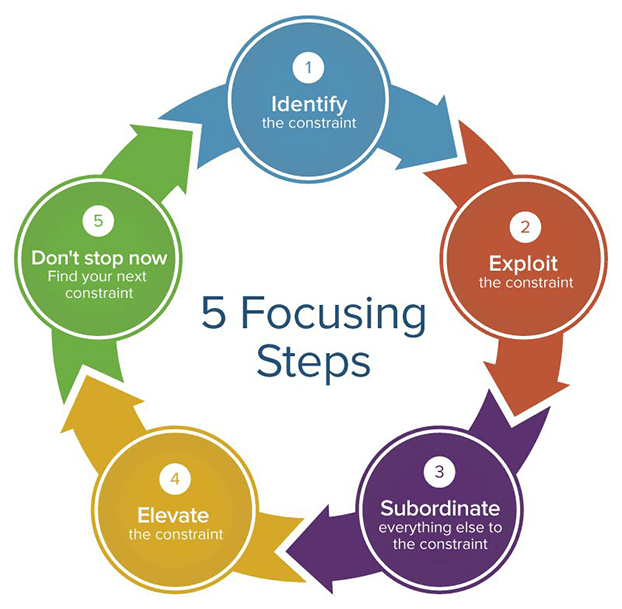The COVID-19 pandemic has ushered in a new remote work culture throughout the world, forcing businesses and their employees to adapt quickly and rethink standard operations. While some parts of the world have partially resumed working from offices, it’s safe to say that a hybrid work model will be around for the years to come.
While this transition has been pretty challenging for most organizations, many have seen substantial benefits from it—a surge in productivity, decreased overhead costs, higher employee retention, and so forth. However, along with these benefits, businesses have had to figure out how to reorganize their most basic day-to-day processes, like daily standup meetings.
In this article, we’ll explore a variety of suggestions that will help businesses run daily remote standup meetings that will be as effective as the in-person ones everyone used to have back in the day.
Let’s jump into it.
Do we still need daily standups?
The transition to remote work doesn’t cancel the necessity for daily standups. Arguably, they’ve become more important now than they’ve ever been. They were once an essential part of an agile team. Now they’re also a valuable tool to keep distributed teams in sync.
But there’s a catch—many businesses still treat standups just like any meeting, which have traditionally tended to be long-winded and unproductive. In contrast, the standup format intends to keep gatherings brief and straight to the point.
Plus, poorly structured standups will only rob employees of their valuable time, which they could have used for focused work. As Basecamp’s cofounder, Jason Fried, once said: “Every minute you avoid spending in a meeting is a minute you can get real work done instead.”

The issue with doing remote standups
Coordinating a distributed and remote team can be really challenging for a variety of reasons—time zone differences, domestic responsibilities, parenting, and so forth.
For many, participating in daily standups may be complicated because they have pre-school children they have to take care of. Others may find these meetings inefficient simply because they’re located on continents other than the core team’s.
Time zones and burnout
If your team is located predominantly within the same geographic area, daily standups may work out. However, the moment your company hires the first person from a different part of the globe, this is where issues start to arise. Bear in mind that if you hold the meeting at around 9 AM on the US West Coast, it’s 6 PM for your colleague located in Germany or 10:30 PM for your colleague from India.
While this employee might not mind joining these calls, it’s safe to say that working at these odd hours will contribute to their burnout and poor work-to-life balance.
More importantly, there are many countries around the world and states within the US where doing so may be illegal.
Potential loss of productivity
While standups seem like a quick solution to increase productivity within a team and remove bottlenecks, it can often be very taxing a team’s focus. Let’s put it this way, even if the standup gathers people exclusively from the same time zone, it will distract them from focused work, which can seriously damage their productivity in the long run.
The same applies to remote employees, but arguably to a greater extent. They’ll stop being productive even earlier since they have to watch the clock for a few minutes before the meeting is due to begin. If you do the math, there are probably a few hours of deep work lost in the process, and depending on the size of your team, the number will only go up.
Missing Advantage
Standups often raise an important question—“Wouldn’t they be more efficient if we were to do this in writing?”. Many find that doing so would be more productive than having to participate in them every day. More importantly, starting the day with a meeting is typically considered taxing on a person’s concentration.

What does an optimal standup look like?
Despite the potential shortcomings of standups, they remain a valuable tool for many teams when they’re used correctly. Let’s take a quick look at some of the essential qualities of a daily standup:
- It should be as brief as possible. These gatherings are designed for quick status updates, typically letting participants go over a few standard topics—the tasks they had worked on yesterday, the tasks they’re stuck with, and the things they’ll be working on today.
- They should be scheduled at recurring times. Once you’ve established a good time for these meetings based on everyone’s availability, continue holding standups at that particular time with few or no exceptions. As a result, this will allow your team members to plan their day around it and not the other way around.
- Unproductive discussions should be avoided. We often tend to get carried away when discussing issues that aren’t necessarily related to the meeting at hand. The meeting’s moderator should be mindful of the topic discussed and stop unrelated conversations in time. Standups have a clear goal, and keeping things quick and effective is paramount.

Daily standup do’s and don’ts for remote teams
Okay, so now that we’ve explored the things we should avoid in daily startups, along with the things we should strive to incorporate in them, let’s take a closer look at 10 do’s and don’ts for shorter, more dynamic, and more efficient standups.
1. Structure is still paramount
Standups are called this way for a reason—they are typically held standing, which gives the meeting a sense of urgency. The slight discomfort associated with not being seated prevents people from discussing things that are unrelated to the subject of the meeting and keeps things short.
Your remote standup meetings should feature the same topics an in-office one would:
- What did you work on yesterday (or any other time frame)? This is the core of your meeting. The answers to this question will keep your team in sync and help them understand the codependencies between their tasks and the tasks that their teammates are working on.
- What are you working on today? Often, a person’s workday will feature a wide array of small tasks, but since standups are meant to be short, participants should focus on discussing one or two primary tasks.
- Are you facing any challenges or obstacles with your current tasks? This is where understanding the codependencies will help people navigate tasks quicker. If something’s stopping a person from executing their task, they should let their team know, ensuring that these hindrances can be eliminated. As a result, this will make the team more efficient and productive.

2. Time limits are still important
Standing up during these meetings is probably no longer an option. You could, of course, have your colleagues stand up, but it feels slightly over the top. One way you can translate the urgency induced by standing is by having a hard or soft time limit.
Hard time limits will generally mean that a person is cut off when their time is up, but that’s not ideal since they can fail to provide the team with vital information.
Soft limits will allow them to speak longer than the time they were allocated, but they should be encouraged to wrap things up as soon as possible.
Besides individual time limits, the whole meeting should also be capped at a certain length. Typically, they shouldn’t last longer than 15 minutes, but as usual, it depends on the size of your team or the number of people attending.
However, if you notice that your meetings constantly run over the allotted time, there are a few issues that might be at fault:
- Your agenda is poorly structured.
- Participants provide vague updates or don’t stick to essentials.
Whenever you spot that your standups take up too much time, consider reviewing these two issues.
3. Designate a leader
Depending on the structure of your organization, there may or may not be people responsible for managing the framework of your choice. Standups are specific to Scrum and Kanban, but this meeting style has been adopted by companies that follow a wide array of methodologies, so often, there isn’t a dedicated Scrum Master or someone in an equivalent role to moderate these meetings. Therefore, organizations often designate a meeting lead. It’s common for the meeting lead responsibility to rotate, typically on a weekly basis.
Having a leader responsible for these meetings has a variety of benefits. First off, it ensures that your standups will have structure and will not spiral out of control when there’s a person to moderate them. Secondly, the rotational aspect allows people to care about the process and be engaged with it.
4. Task boards are crucial
We, as humans, strongly rely on visual input to navigate the world around us. Typically, daily standups are complemented with task boards that outline what’s done, what’s being done, and what is to be done. Ensuring that your team uses a digital task board is extremely important, in order to enable them to have a better understanding of the codependencies, commitments, and requirements of their work.

5. Cameras on
There’s a chance that your meetings will be more productive if the attendees’ cameras are on. In-person meetings create a sense of presence and urgency by running these meetings standing, while remote meetings could partly replicate that by showing their faces during the standup.
Having cameras on will also help participants focus by keeping their eyes on the screen throughout the standup. Let’s be honest, most of us would probably be distracted by things other than work.
The sense of mindfulness and presence that having your camera enabled creates is a small but useful trick that will help keep your meeting participants engaged.
6. Standups are not for problem-solving
It’s essential to keep in mind that daily standups are a place of noting problems but not solving them. The main goal of this gathering is to sync the entire team up and provide it with a sense of context.
As we mentioned above, one of the critical questions that need to be answered during standups regards the bottlenecks that people are facing with their current tasks. However, meeting leads should be careful not to allow the conversation not to spiral into a discussion about how these issues should be resolved. Doing so will only rob the people present at the meeting of their time, all while they have nothing to do with the task at hand.
Make sure that these issues are noted and that the people that can help address these problems do so in a one-on-one meeting, via email, or any other medium.

7. Keep introverts in mind
People are different. Not everybody is as excited about participating in social activities like meetings. Some actually find them fairly taxing, especially introverts. However, that doesn’t mean that they are less efficient than the rest of the crew.
In order to make meetings more bearable for them, consider making a few adjustments like:
- Allow them to communicate in written form. Introverted people often find reporting via messages or email more comfortable.
- Propose one-on-ones. Introverts don’t find communication itself uncomfortable, rather when it happens in large gatherings. Therefore, it’s always a good idea to allow them to interact with the meeting leader personally.
8. Keep negative feedback at bay
The main purpose of a standup meeting is to provide context and keep the team’s spirits up. It’s meant to remind everyone that they’re working on a common goal, which should motivate them to do better. Introducing negative feedback to a meeting will only defeat the purpose of helping them perform.
Generally speaking, providing feedback is an extremely fine and complex subject because doing so without understanding how it makes people feel may corrode the team spirit and a person’s engagement and accountability.
If you need to deliver some negative feedback to a person, do so privately, not during a standup.
9. Distribute time equally
Daily standups are supposed to be a collaborative effort, and managers or leaders shouldn’t be privileged with more time to speak. These meetings should aim to help teams better understand codependencies and bottlenecks, which means that the time should be distributed among people equally among the participants in the call.
Often, managers or team seniors become the focus of meetings, and rightfully so, they’re there to provide their colleagues with strategic guidance and recommendations, but that shouldn’t be true of daily standups.
10. Decide a Frequency
Standup frequency is something that should be at the discretion of the company. Businesses are different—they have different products, processes, structures, people, and so forth. Therefore, if running standups on a daily basis isn’t critical, there’s no reason to do so. The same goes if a company finds it necessary to conduct two standups a day—if that benefits the people in the organization—feel free to do so. However, it’s also important to be mindful of the fact that the law of diminishing returns does apply to meetings as well, so make sure that a higher frequency of meetings is justified.

There’s room for experiments
Above, we’ve provided a lot of parameters companies should take into account to run standup meetings that are actually useful and productive. However, in this section, we’d like to recommend organizations to experiment with this type of meeting, since the people in your company can respond differently to remote work in general. Below are a few things you could tweak in order to improve the quality of your standups in a work-from-home environment.
Switch up the agenda, and write it down
Standups typically have a pretty straightforward agenda: done, doing, and to-be-done. However, that doesn’t necessarily have to be the case. As we said previously, every company is different, and its needs can differ too.
Feel free to change the agenda for your upcoming standups and consider requesting feedback from your colleagues regarding their satisfaction with the new format. If you happen to stumble upon a structure that will make your teammates more engaged and productive, consider exploring it further. Efficiency is what matters at the end of the day, so don’t shy away from switching things up a bit.
Make it optional
It’s also a good idea to explore whether you need daily standups in the conventional meaning. Work-from-home models can be taxing for a lot of people, especially if they have children or relatives that they have to take care of. The same applies to teams that are distributed around the globe. If your organization has employees throughout a wide array of time zones, these meetings could be kind of unproductive. Here are a few things that you can experiment with:
- Switching to chat updates. If you’re a team leader and you have employees that start work a couple of hours ahead of you, consider adopting chat-based updates. This way, everyone on the team can still have access to everyone’s input without having to be on the same call.
- Switch to recorded updates. Distributed teams can have a few standups a day for people in different time zones. These meetings can be much shorter and recorded, allowing the people that start work later in the day to receive quick updates.

Daily cafes
Often, organizations tend to make meetings all about processes and information exchange, forgetting about the more complex social and interpersonal elements of teamwork. It’s safe to say that the pandemic has underlined the importance of communication and support between coworkers and maybe it’s a good idea to move away from the productivity-oriented daily standups and switch to less formal meetings at least once in a while. That is not to say that standups should be cancelled altogether, but it’s worth considering this change to improve the team spirit and bring people closer together.
A good format for such meetings would be a daily cafe, where coworkers can enjoy a beverage of their choice and discuss work along with other things, without being confined to an agenda or a timeframe.
Bottom line
It’s essential to keep in mind that daily standups are a tool and that there are many ways to use it. We’re now in the middle of a worldwide pandemic that has radically changed the lives of most people, and while it’s a good idea to continue having regular status updates, it’s also worth looking into tweaking them.
























































